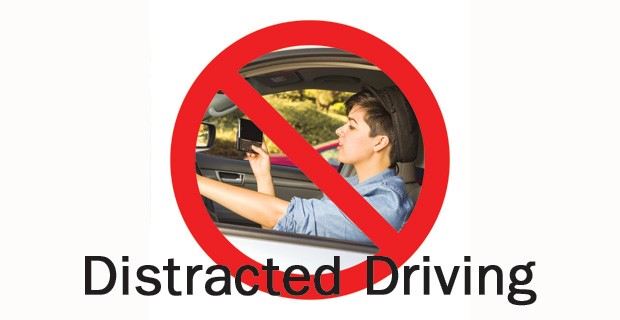
Distracted driver, no survivor. Many teens can’t wait to get a license, but a huge responsibility that comes with it is distraction-free driving—a topic that’s often neglected.
A distraction is anything that takes your eyes off the road: using a phone, talking to others in the car, applying makeup, using a GPS system, eating, or adjusting the radio. While all distractions endanger the lives of those in your car, in the cars around you and bystanders, the most dangerous is texting.
Driving requires three skills: visual, cognitive (judgment and perception) and manual (hands at “10 and 2”). Texting requires the same skills. See the problem? It takes at least four to six seconds to send or receive a text. At 55 mph, you can drive the length of a football field in six seconds. Would you drive that far blindfolded?
The facts: scary but true
- Car accidents are the No. 1 cause of teen deaths, and distracted driving is one of the greatest contributors to this statistic.
- Of fatal crashes that involved drivers under age 20, 16% of the drivers reported being distracted. This figure is probably higher, though, because it can be hard to admit that cell phone use caused an accident.
- Any driver using a hand-held device is four times more likely to be in a collision that injures the driver.
- Crashes caused by drivers who were texting are 23 times worse than those caused by drivers who weren’t distracted.
- When you drive and use a cell phone at the same time, your brain is 37% less focused on driving safely. In the United States, a crash occurs every 24 seconds because of a driver who is using a cell phone.
Adding alcohol to the mix
Since 1991, teen drinking and driving has gone down by 54%. Still, teens drink and drive about 2.4 million times per month. Young people are already three times more likely to be in fatal crashes than drivers with more experience.
Even with a blood alcohol concentration (BAC) of 0.02 percent, your brain starts to relax (making it harder to practice good judgment); it gets harder to do more than one task at a time, and your eyes don’t focus as well. At 0.08 percent, your brain doesn’t detect danger well, it’s hard to concentrate and process information, your memory gets weak and your coordination is impaired. The higher your BAC, the more you endanger lives.
Distracted driving can be the worst
Studies have found distracted drivers can be more dangerous than drunk drivers. In an episode of TV’s “MythBusters,” hosts Adam Savage and Kari Byron failed road safety tests while driving with a BAC just below 0.08 percent and on separate occasions while using a cell phone. Both received worse scores when they drove using cell phones. The folks at Car and Driver magazine had similar results when they did their own drunk driving versus distracted driving tests. At the end of the MythBusters segment, Savage noted that you can remedy distracted driving by putting away your cell phone, but you can’t get sober in an instant.
What you can do
Crashes caused by distracted or drunk drivers are 100% preventable. Choose to never use your phone (and to eliminate other distractions) when you drive, and to never drive drunk. Let your parents and friends know that if you don’t answer your phone or their texts right away, it’s because you’re driving.
This article includes information from the U.S. Department of Transportation, National Center for Statistics and Analysis, MONASH University Accident Research Center, Distraction.gov, National Safety Council, National Center for Statistics and Analysis, TeenDriverSource.org, Centers for Disease Control and Prevention, University of Utah News Center, MythBusters Database, and CarandDriver.com.
Jelani Hayes shares in a video three steps she takes to make sure she’s not distracted while driving.
